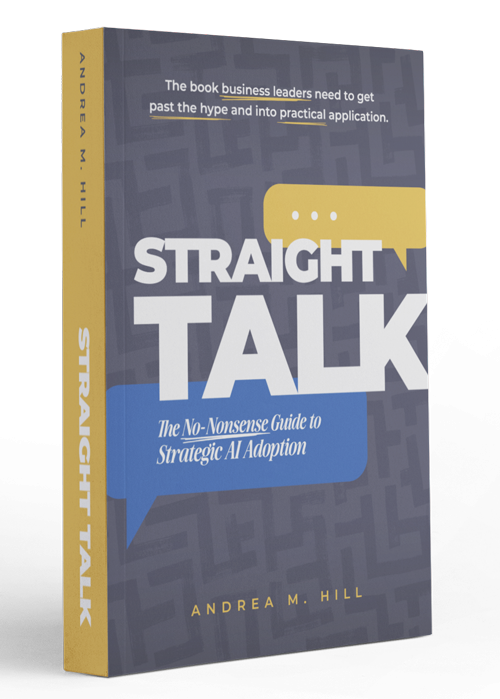Master the Art of B2B Storytelling: Captivate Your Audience and Drive Action

The connection between the art of storytelling and B2B marketing might not be obvious at first. Storytelling in B2C marketing makes a lot of sense, as purchasing decisions are often more emotional and visceral in nature, the emotions being more easily swayed by a good story than the intellect. Retailers want to build a relationship with consumers to drive loyalty.
B2B decision-makers aren’t just coldly calculating rational actors. With so much at stake, there has to be trust between B2B businesses and their customers. Since you’ll be supplying their business with what it needs to function, those decision-makers have to know that you can deliver and that you won’t be hard to work with. You build trust by building connections. Building connections, ultimately, is what brand storytelling is all about.
Why Stories Matter
B2C marketing is all about emotion, while B2B marketing is all logic and hard data, right? Maybe not. While we may think of them as separate spheres, recent neuroscience research suggests that emotion and reason are always intertwined. If you’re writing persuasively, a well-reasoned, well-researched, fact-based appeal is not enough. You have to forge an emotional connection with your audience.
Besides, every business has facts, features, and numbers listed on their website. Many businesses are offering similar products at similar price points. While it’s important to follow industry norms and do what other successful companies are doing, you need something more, something that helps you stand out. That “something” is an emotional connection. You need to show your humanity. You’re not just a business, you’re a collection of people working toward a goal. Storytelling helps you show your personality and culture and demonstrate why your culture will fit seamlessly with that of your customers.
Show, Don’t Tell
One of the most powerful, and most misunderstood, guidelines for storytellers is “show, don’t tell.” What this means is that instead of, for instance, having two characters talk about what a nice guy character #3 is, you write a scene in which character #3 finds a wallet on the street while helping some schoolchildren cross safely and returns the wallet to the owner, refusing a reward because good deeds are their own reward.
Content marketing that draws on actual problems your business has solved, including case studies featuring customer success marketing, are a great way to not just tell prospective customers that you offer great service, but to show them exactly how you’ve done it for others. Blog posts that demonstrate expertise and an understanding of customer problems, all while being engaging to read, are another way to show, not just tell, customers what you can do for them.
The Customer is the Hero
Every story has a protagonist: the main character, the one the audience is rooting for and identifying with. In B2B storytelling marketing, the protagonist is the customer. In order to better understand your customer, first construct an ideal customer profile (ICP) and map the customer journey. With these tools in hand, you’ll have a clear idea of your customer’s motivations and values, as well as the ways in which they discover businesses, evaluate them, and ultimately choose which one to work with.
Some businesses make the mistake of positioning themselves as the protagonist in their marketing materials. Doing so fails to answer the most important question the customer has: “What can this business do for me?” The way to answer this is to position your business as a helper, something or someone that the customer discovers and then employs to overcome challenges.
In other words, rather than talk about your heroic quest to develop the perfect software solution, talk about the problems your industry faces and how your service solves those problems. Don’t think of your business as Cinderella; think of it as her fairy godmother.
The Three-Act Structure
There are as many ways to structure a story as there are numerals (seriously: google “x act structure,” replacing x with the numbers 1-9), but the simplest one for our purposes is the three act structure: beginning, middle, and end. This simple structure provides a useful framework for demonstrating how you can help customers solve problems. Since the customer is the protagonist, put yourself in their shoes.
- In Act 1, the beginning, something bad happens to present a challenge to the protagonist.
- In Act 2, the middle, the protagonist struggles against the problem, but by the end of the act, they realize that they’ve been going about it in the wrong way.
- In Act 3, they discover the right way to solve their problem. They discover you.
B2B Storytelling: Your Happy Ending
Trust is the key to building lasting business relationships. Telling stories like this, with empathy and a deep understanding of the kinds of problems faced by the businesses you serve, will go a long way to building trust and winning new customers. When you bring together the experience of sales teams, the technical expertise of operations teams and developers, and the creativity of a marketing team, your story will have a happy ending.
Andrea Hill's
Latest Book
Straight Talk
The No-Nonsense Guide to Strategic AI Adoption

Where other books focus on prompts and tools, this book gives business leaders what they actually need: the frameworks and confidence to lead AI adoption responsibly, without having to become technologists themselves.
Also available at independent booksellers and public libraries.
Are You Ready to Do Better Marketing?
WerxMarketing is all about performance marketing. That means giving you the tools you need to connect with customers, enable your sales efforts, and turn leads into loyal customers. Ready to learn more about how we do that? Book a free consult and bring your questions. See if you like working with us on our dime, and get some good advice in the process.